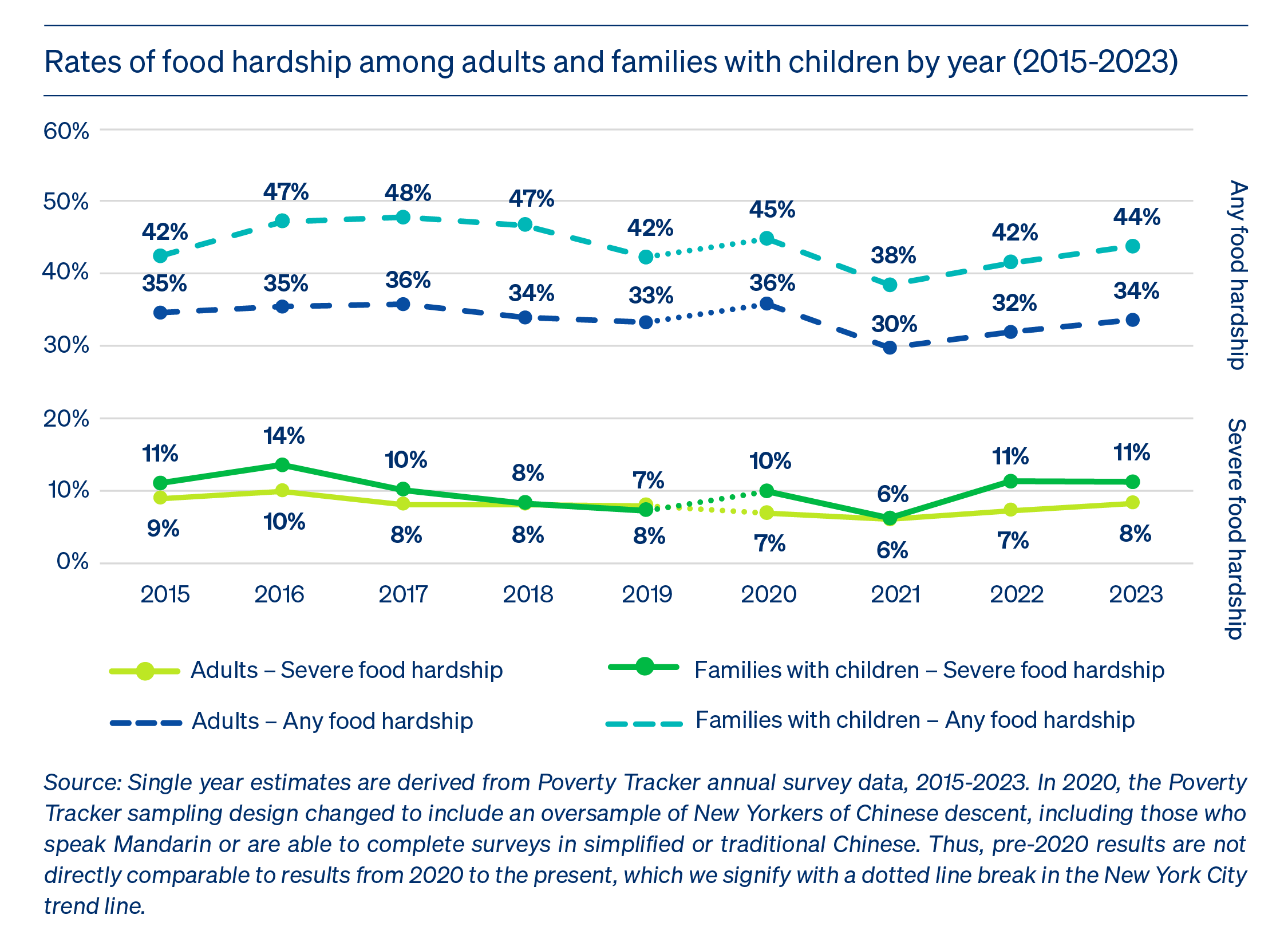November 2024
Spotlight on: Food Assistance from NYC’s Pantry System
One in three New Yorkers have used a food pantry over a three-year period following the pandemic; year-over-year pantry use remains twice as high compared to before the pandemic.
Contributors: Christopher Wimer, Anastasia Koutavas, Ryan Vinh, Christopher Yera, Sophie Collyer, Yajun Jia, Schuyler Ross
Issues Areas: Food Hardship
This spotlight report examines food pantry use before and since the COVID-19 pandemic in New York City, covering 2015 to 2023, and finds that one in three adults (31%) and nearly half of families with children (44%) experienced food hardship in 2023, a rate that remains consistent with the previous year’s study.
The report defines food hardship as sometimes or often running out of food, or a person worrying that they will.
Findings also show that pantry use among families with children tripled at the height of the pandemic in 2020, and today, utilization rates remain twice its pre-pandemic level, at 18% in 2023 compared to 9% in 2019. Over this same period, pantry use among employed New Yorkers also soared, more than tripling in 2020 and remaining twice as high in 2023 at 11% compared to 2019, when it stood at 5%.
1 in 3
New Yorkers have relied on a food pantry over a three-year period post-pandemic.
31
%
of adult New Yorkers experienced food hardship in 2023.
44
%
of families with children in New York City experienced food hardship in 2023.
Additional Findings:
- The population of pantry users has increased and diversified since 2019, including New Yorkers who may not be eligible for SNAP or choose not to apply for benefits. As a result, the percentage of pantry users receiving food assistance benefits, like SNAP, dropped from 66% of pantry users receiving SNAP benefits pre-pandemic to 44% in the years since.
- Nearly three out of four pantry users (72%) reported experiencing financial shocks, such as job loss, income decrease, or unexpected expenses.
- Compared to pre-pandemic figures, fewer pantry users report serious health challenges. Prior to the pandemic, 60% dealt with a serious health problem, such as being in poor health or experiencing a work-limiting health condition. Since the onset of the pandemic, that figure drops to 48%, underscoring that a diverse group of New Yorkers, including those in good health, turn to pantries in times of need.

While many may take for granted access to healthy, nutritious food throughout the year and during the holidays, this is not a reality for many New Yorkers. The price of groceries has shot up in recent years, making it a lot more difficult for many New Yorkers to afford food. And as the COVID-19 pandemic receded, so did many of the policy supports that reduced poverty and material hardship in the city. Thankfully, NYC has a robust network of food providers that aim to make access to food easier for those who are struggling. That’s why Robin Hood supports many of these providers and advocates for the expansion of the city’s emergency food safety net to help families in need.